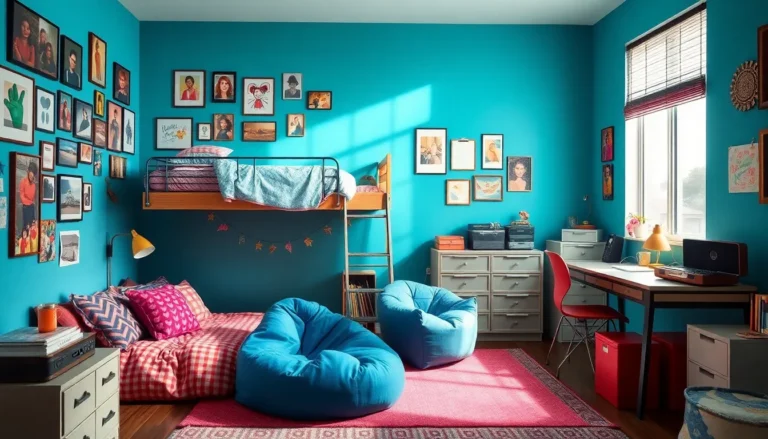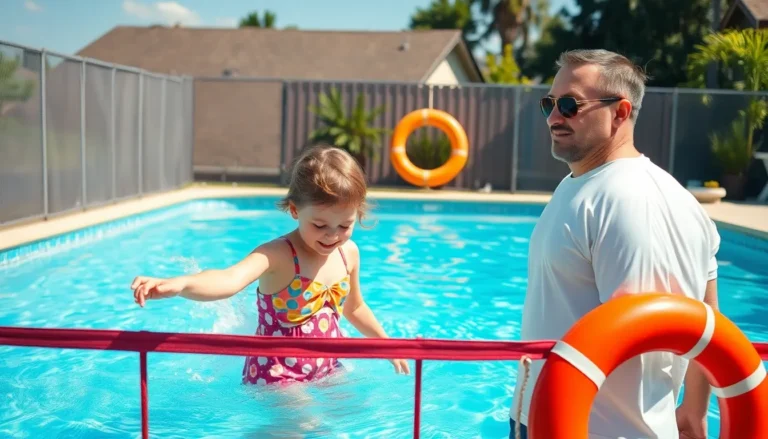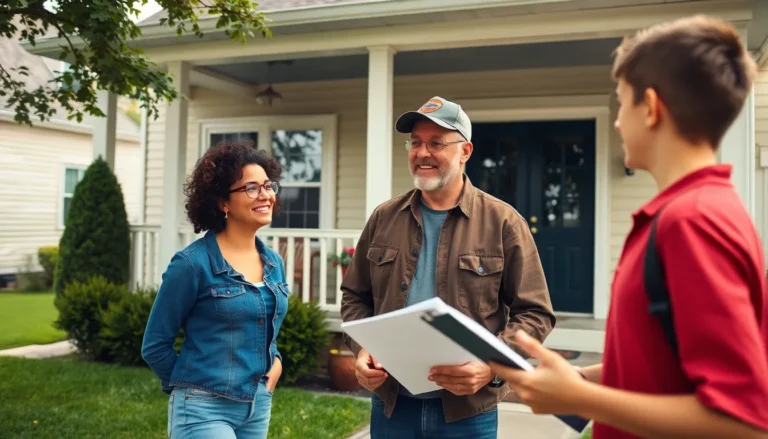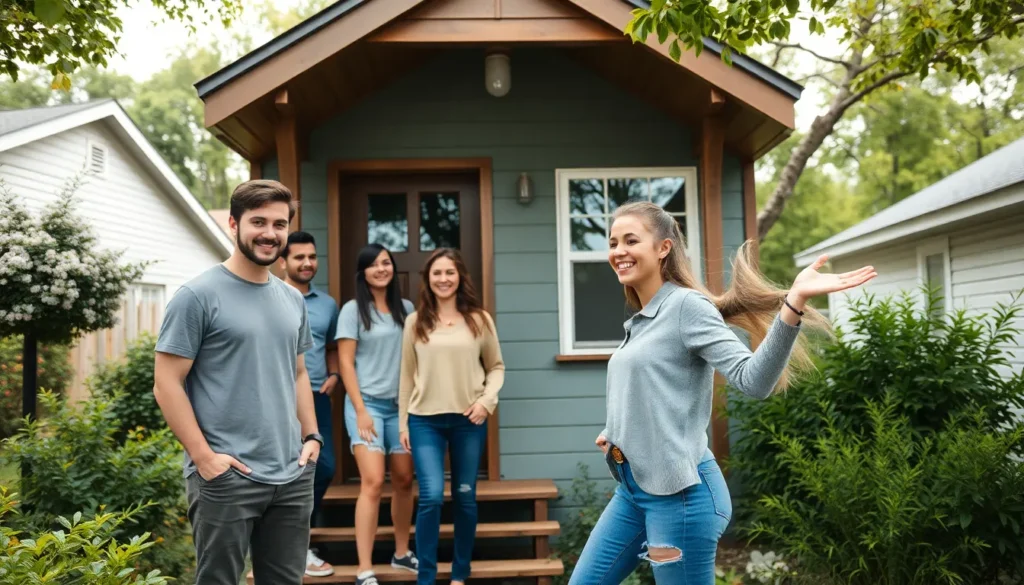Table of Contents
ToggleIn a world where change is the only constant, moving trends are like fashion statements for your living space. Whether it’s the rise of tiny homes or the allure of suburban living, people are packing their bags and hitting the road for new adventures. Who knew that swapping city skylines for backyard barbecues could be so trendy?
Overview of Moving Trends
Moving trends reflect the changing priorities and lifestyle choices of individuals. Increased interest in minimalism drives the popularity of tiny homes, allowing people to simplify their lives. Many choose suburban living for its balance of space, accessibility, and community. This shift from urban centers caters to those seeking a calmer environment, often leading to people prioritizing green spaces and recreational areas.
Remote work opportunities amplify this trend, enabling individuals to relocate without being tethered to a specific city. Workers appreciate flexibility, leading to moves across regions in search of lower housing costs and improved quality of life. In 2023, data revealed that 25% of Americans moved to suburban areas, showing a clear preference for these tranquil settings.
Environmental consciousness also impacts moving trends. Many are opting for eco-friendly living solutions, influencing their choice of materials and home designs. Incorporating sustainable features such as solar panels and efficient appliances presents a significant draw for potential buyers.
Population dynamics play a substantial role in shaping moving preferences. Millennials and Gen Z individuals exhibit a strong inclination toward communities that prioritize social engagement and sustainability. These generations express a desire for homes that promote both connection and environmental responsibility.
Consequently, the trend toward co-living spaces stirs interest as more individuals seek affordable yet communal housing options. Co-living provides both economical living arrangements and opportunities for social interaction. As shifting demographics and lifestyle choices redefine housing preferences, these moving trends continue to evolve, catering to the desires of modern society.
Factors Influencing Moving Trends

Several factors shape current moving trends. Economic and social influences play significant roles in where people choose to live.
Economic Influences
Economic conditions directly affect mobility choices. Housing affordability drives many individuals to seek options in suburban areas. Rising living costs in urban centers push 25% of Americans toward these suburban locations in 2023. Job availability remains crucial; remote work opportunities have expanded since the pandemic, enabling relocations to areas with lower living expenses. Interest rates impact mortgage applications, encouraging homeowners to sell for better deals. Overall, economic stability encourages people to relocate for improved quality of life and financial benefits.
Social Influences
Social dynamics also impact moving preferences. Community engagement has become increasingly important, influencing location decisions. Millennials and Gen Z actively seek neighborhoods that emphasize connection and sustainability. The desire for shared experiences drives the popularity of co-living spaces, catering to budget-conscious individuals while fostering a sense of community. Additionally, shifting values toward minimalism and eco-friendly lifestyles affect the type of homes people seek. As societal priorities evolve, these social influences shape the overall landscape of moving trends.
Popular Moving Trends
Many individuals are increasingly conscious of their environmental impact, leading to a rise in eco-friendly moving solutions. Sustainable packing materials like biodegradable boxes are gaining popularity. Electric moving trucks minimize carbon footprints during relocations. People are also opting for reusable packing supplies that reduce waste. Additionally, many movers offer recycling services for unwanted items, making it easier for clients to dispose of belongings responsibly. Green certifications for moving companies provide peace of mind for consumers focused on sustainability.
Smart home integration represents another trend influencing the moving landscape. Homes equipped with smart technology attract buyers seeking convenience and efficiency. Features like smart thermostats and security systems enhance home comfort and safety. Potential movers often prioritize properties that include automation for lighting and energy management. Internet of Things devices streamline daily routines and appeal to tech-savvy generations. Connectivity becomes a significant selling point, ensuring that homes meet modern living standards. As these trends continue to develop, they shape the preferences of those looking to relocate.
The Impact of Technology on Moving Trends
Technology significantly influences moving trends, reshaping how individuals approach relocation. This impact manifests in various forms, enhancing convenience and efficiency throughout the moving process.
Online Moving Services
Online moving services streamline the relocation experience, offering users easy access to quotes and booking options. Many companies provide digital platforms for comparing pricing and services, allowing consumers to make informed decisions. Transparency in reviews and ratings helps individuals select reputable movers. Platforms may also include features like tracking shipments in real-time. These advancements reduce stress and improve overall planning, making moving more manageable for everyone involved.
Virtual Reality Tours
Virtual reality tours revolutionize property viewing, allowing potential buyers to explore homes from anywhere. This immersive technology provides a realistic sense of space and layout without needing an in-person visit. Buyers can experience multiple properties within a short timeframe, increasing efficiency. By leveraging virtual reality, real estate agents can showcase homes effectively, catering to long-distance clients. This method enhances the search process, making it easier for individuals to find ideal living spaces aligned with their preferences.
Future Predictions for Moving Trends
Suburban living continues to gain traction as economic conditions shift. Many individuals prioritize lower housing costs and improved quality of life, leading to an estimated 30% of Americans relocating to suburban areas by 2025. Remote work flexibility also plays a crucial role, allowing families to choose locations based on lifestyle preferences rather than job proximity.
Environmental concerns dictate future moving choices. A growing number of people opt for eco-friendly solutions, and this trend is expected to influence approximately 40% of movers by 2025. Sustainable packing materials and electric moving trucks will likely become standard options, aligning with consumer demand for greener alternatives.
Technology reshapes the moving landscape at a rapid pace. Online platforms will streamline the moving process, enhancing transparency in pricing for consumers. Solutions such as virtual reality property tours are projected to become commonplace, offering buyers an immersive experience that simplifies the search for new homes.
Community-oriented living arrangements, including co-living spaces, will rise in popularity. Younger generations, particularly Millennials and Gen Z, value affordable and socially engaged environments, leading to increased demand for shared housing options that foster interaction. These living arrangements typically emphasize sustainability, reflecting broader societal trends.
Smart home technology now influences buyer preferences significantly. Homes equipped with smart features, such as intelligent thermostats and security systems, attract more interest, as they enhance daily convenience and safety. This growing inclination for technological integration suggests that future home buyers will prioritize connectivity in their searches.
The shifting landscape of moving trends highlights a profound change in how individuals prioritize their living environments. As people seek balance between affordability and community engagement, suburban living emerges as a favored choice. The rise of remote work and eco-consciousness further shapes these preferences, encouraging a lifestyle that values sustainability and connection.
Looking forward, the demand for co-living spaces and smart home technology is poised to grow, reflecting the desires of younger generations. These trends not only redefine where people choose to live but also how they approach the concept of home. Embracing these changes will be essential for anyone navigating the evolving real estate market.







